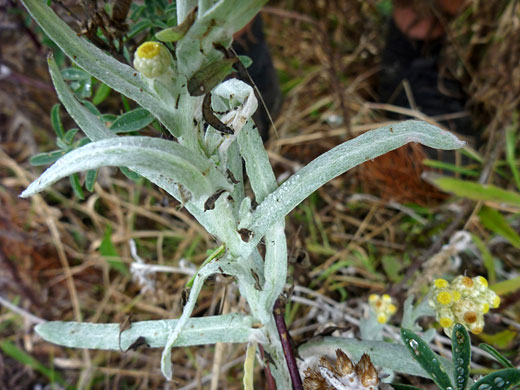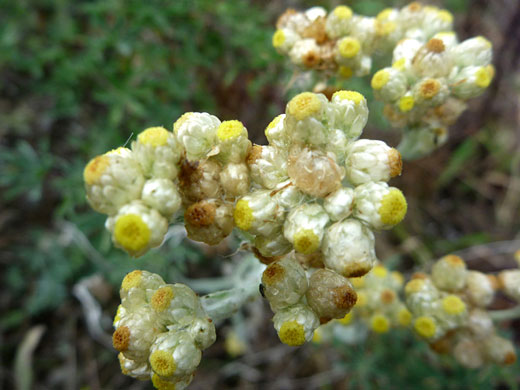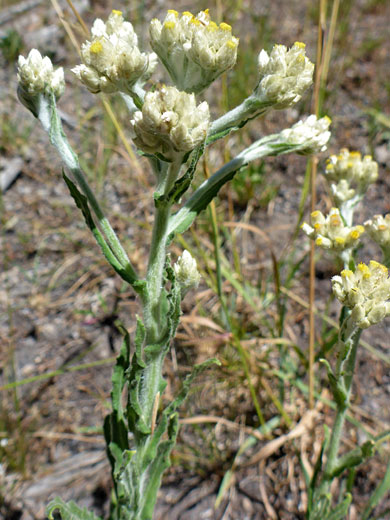Pseudognaphalium Stramineum, Cotton-Batting-Plant
Plants > Wildflowers > Asteraceae > Pseudognaphalium Stramineum
Common name:
Cotton-batting-plant
Family:
Scientific name:
Pseudognaphalium stramineum
Main flower color:
Range:
Mostly in the Pacific and southern states; smaller areas to the north
Height:
Up to 2 feet
Habitat:
Varied; roadsides, forest, hillsides, chaparral, coastal bluffs, dunes; usually to 5,200 feet, but adventive in some higher elevation regions
Leaves:
Narrow; oblong to oblanceolate, up to 3 inches long, hairy
Season:
March to August
The main identifying features of pseudognaphalium stramineum are the grey-green color of the leaves (the same on both sides), the clasping leaf bases, the dense flower clusters and the yellow color of the disc florets. Plants are most commonly found in coastal areas of the three Pacific states, but also occur inland, up to 8,000 feet elevation. Leaves and stems are densely covered by soft, white, non-glandular tomentose hairs. Leaves are generally flat, though the edges may be curled slightly downwards.
The spherical flowerheads cluster tightly together, borne at the tip of the stems and at the upper leaf nodes. The involucre is ringed by several rows of whitish (becoming yellow then brown as they mature) phyllaries, oblong or ovate in shape. Flowerheads are disciform, containing both disc florets (numbering 160 to 200) around the edge and slightly larger pistillate florets (18 to 28) in the center.
The spherical flowerheads cluster tightly together, borne at the tip of the stems and at the upper leaf nodes. The involucre is ringed by several rows of whitish (becoming yellow then brown as they mature) phyllaries, oblong or ovate in shape. Flowerheads are disciform, containing both disc florets (numbering 160 to 200) around the edge and slightly larger pistillate florets (18 to 28) in the center.
All Contents © Copyright The American Southwest | Comments and Questions | Contribute | Site Map





